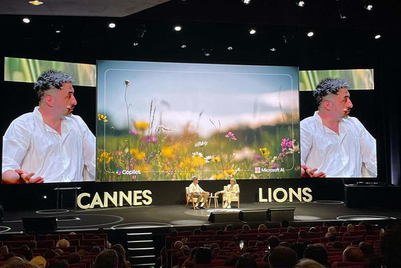
‘Hipster’ has become a frequently used term in the marketing industry. What comes to mind is the image of a bearded, top-bun-wearing young man with flannel-shirt and jeans, drinking fair-trade coffee, boasting a third-hand bicycle and a strong proclivity to indie music. It is ubiquitous across fashion and lifestyle media. What is the impact of the hipster trend in Asia? Is it a fad or is it here to stay?
Blues and hip-hop music came from backgrounds filled with adversity, like slavery, discrimination, and poverty. The music and culture told stories of such societal struggles, and commonly refer to the pain and anger associated with the challenges the people faced.
The modern hipster today generally comes from a middle-class background. They have few “real” problems in their lives. They live in suburban neighbourhoods, are well-educated, and are surrounded by the comfort of a TV, car, and more than enough entertainment, food, and beverages.
Approaching adulthood, all youngsters want to establish their own personality. The hipster wants to rebel against the status quo, without jeopardising the creature comforts he or she is accustomed to.
How hipsters express themselves changes over time and by location. By definition, they want to be defined by their uniqueness, so what they wear and listen to needs to continuously evolve. At the same time however, they want to belong to a group, sharing a common ideology and fashion, so in rife contradiction, hipsters have gone mainstream: sporting the same hats, black-rimmed glasses, and vintage clothing to communicate their belonging. They all want to be “the unique snowflake”, and yet echo the same. (Let’s face it, when it’s TopShop, it’s no longer sub-culture.)
Many Asian markets have experienced significant economic progress. This has created a substantial middle-class, which provides a rich breeding ground for a hipster subculture. The first wave we see is a more aspirational 'imported hipster', who assimilates brands, styles and habits from kindred spirits in other countries. As a result we have the same flannel-shirt-wearing, Ray-Ban Wayfarer-sporting Asian man growing a beard and a top bun, following the lead from US or European brethren.
We are also seeing the emergence of 'local hipsters' who are creating a counterculture based on their own history and surroundings. Economic booms in individual countries have fueled confidence in their own culture (Asiafication). Case in point, Thailand has a strong hipster culture and national pride. The hammered copper mule mug can be spotted in some of Bangkok’s coolest bars, although it was originally used in rural Thailand for a variety of beverages. The same is true for Ya-dong (a countryside herbal moonshine served from a glass jam jar) which has spread as far afield as New York.
Chinese hipsters are slowly emerging, too. These young adults have similarly grown up in relatively comfortable circumstances, doted on by parents and grandparents due to China's one-child policy. Due to the country’s economic growth, they possess more material wealth than their parents, thus have the unique luxury to use music and art to express themselves. In Chinese, they are the wenyi qingnian or wenqing for short, literally meaning "cultured youth”. They combine a love for Chinese culture (poetry, novels) with a passion for overseas culture (indie music, European cinema) and a positive appreciation of nostalgic elements (gardening, quilting, cooking). They express themselves via Weibo (pictures, observations) to share their passions and their positive outlook (environmental awareness).
Marketers can expect this trend to continue for several more years in Asia as the middle class rapidly grows.
One definitive part of the hipster movement is the 'take and twist'—where a cultural element (picture, sound, food) is borrowed and interpreted with a new spin. This appropriation of culture, influence and pastiche expression combines their appreciation of nostalgia/history with a desire to express themselves in a modern, global, multi-influenced way. Upscale bar and restaurant Zuma in New York presents its cocktails in plastic bags, commonly used in Asian hawker markets for fruit, dairy and soy drinks. This is an example of taking something with a “real story” and heritage, twisting it with a contemporary attitude, and presenting the final product within a novel context—albeit to sell (very expensive) cocktails.
We see Asian hipsters displaying a preference for local culture that is deemed real and authentic, artifacts that have a strength in history and local pride. Local brands can delve into their past to 'take and twist' historical equity to make products and experiences relevant and revitalised once again. Global brands, on the other hand, can look for ways to connect with local culture and hipster millennials through a similar fashion: by uncovering an authentic truth that bridges their brand’s purpose with a driving socio-cultural insight. Few global brands have explored this to date.
While we can expect hipsters to be around for the foreseeable future, with their penchant for nostalgia, borrowed culture, and alternative street cred, it’s also very possible that “bling” may make a reactive comeback to counter this now dominant culture—especially given an existing predisposition towards sparkling objects in Asian fashion. Nevertheless, with global trends favouring the real, authentic, and natural, the hipster-trend is here to stay and will continue to grow across Asian markets.
Paul Galesloot, CEO, Cowan Asia


.jpg&h=334&w=500&q=100&v=20250320&c=1)


.png&h=334&w=500&q=100&v=20250320&c=1)




.png&h=334&w=500&q=100&v=20250320&c=1)

+1.jpg&h=268&w=401&q=100&v=20250320&c=1)



.png&h=268&w=401&q=100&v=20250320&c=1)


